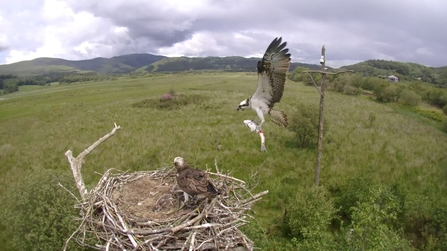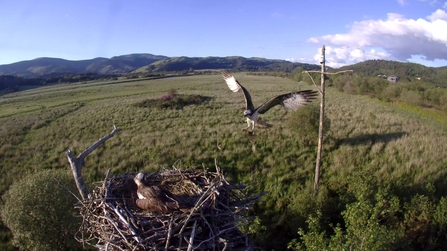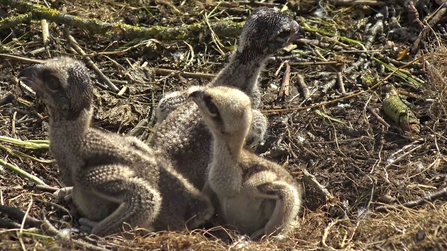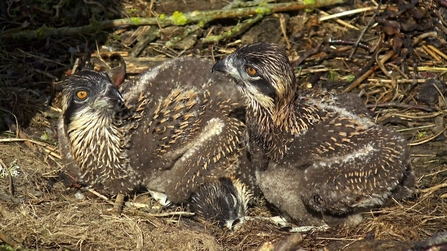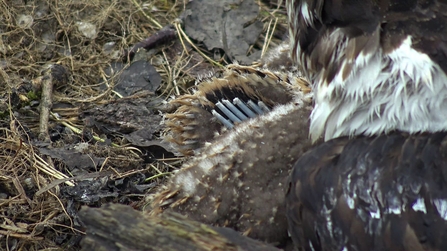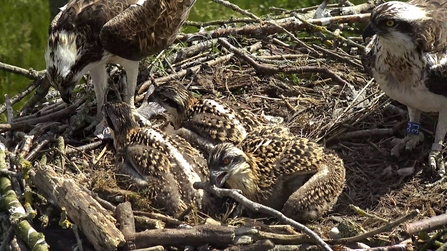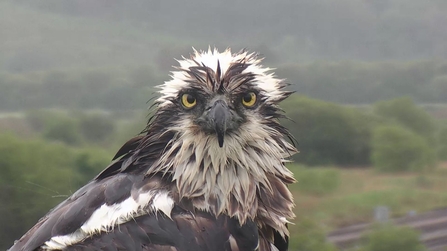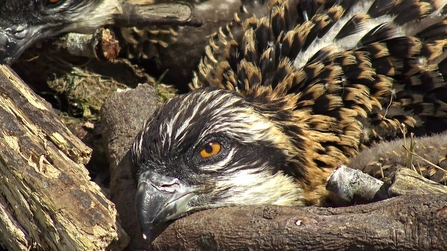This is the time of year when you go away for a couple of days, and by the time you come back the chicks are unrecognisable!
A lot has happened over the last week or so, here is a quick summary.
The Whoppers!
As predicted, Monty has really stepped up his game in regards to catching fish recently. After all, the number of mouths to feed has risen from two (Telyn still relies on Monty for food) to five.
Here are only a couple of the monster catches he has brought in recently. The most common fish Monty is bringing in at the moment is mullet.
Monty with an enormous grey mullet
